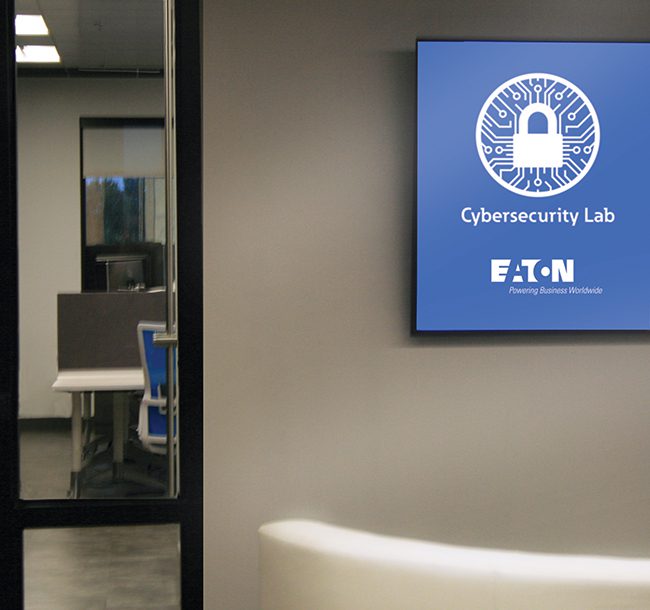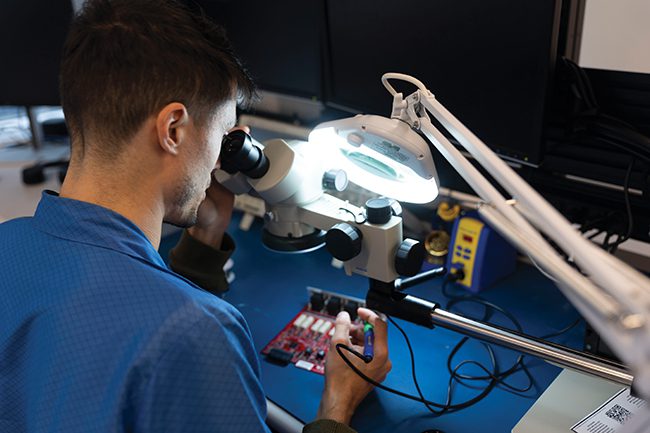Research and Development Investments Vital for a Clean Energy Future
Several solutions are needed to support deployment of renewable energy and enable continued growth in the use of distributed energy resources.
The structure of energy systems everywhere is changing fast, creating vast opportunities to rethink how power is created, managed, and optimized. New tools and strategies are required to make that happen.
A centralized energy supply is no longer a reality. Renewables have moved beyond providing an “alternative” source of energy and into the mainstream, helping power critical operations everywhere. More than a third of the world’s electricity will come from renewables by 2025, through a combination of centralized, regional, and local deployments, according to the International Energy Agency (IEA).
This shift to distributed energy resources (DERs) creates both opportunities and challenges for utilities, industrials, and commercial applications alike. Theirs is now a far greater opportunity to be in control of your energy destiny, but it’ll take greater coordination, predictability, control, and security.
Although technology supporting DERs is advancing at a rapid rate, more investments in research and development (R&D) are vital to create new tools and strategies that accelerate and realize clean energy goals. As renewable energy adoption increases, the grid needs to better manage energy supply and demand. And energy systems everywhere need far more flexibility and situational awareness to adapt and decarbonize.
Complex Energy Dynamics at Work
Electrification of more areas of the economy, such as transportation and building systems, is driving substantial increases in power demand. As electricity demand soars, the need for resilience is ever more important.
Expectations for power reliability and availability are extremely high across sectors. The grid needs to work 24/7 as new energy resources are added and others are retired. Downtime is not an option for nearly any business. Industrials have critical processes and materials on the line. Data centers are providing vital connectivity to support nearly every aspect of life while buildings need to ensure the safety and comfort of occupants.
Already, 77% of companies expect to transition away from their current power sources. Yet, only half are executing the digital strategies needed to navigate that shift, according to an S&P Global Market Intelligence report commissioned by Eaton.
With the energy transition, there’s the novel ability to surgically add capacity with DERs where and when needed to keep pace with demand and electrification. Traditional energy consumers are becoming power producers, relying less on the grid and generating far more onsite power. They are generating, storing, and consuming their own energy via solar, wind, battery storage, and microgrids, and creating a bi-directional flow that’s changing the way power can be managed and optimized.
R&D Vital for New Energy Landscape
There’s a vital need for new technologies and approaches to accelerate the energy transition and enable more DERs to come online faster. A new energy landscape that’s more distributed, clean, and variable requires investments in novel solutions. Those include:
Advanced Solutions to Maximize DERs. Every energy system is unique, purpose-built, and updated over time to meet specific energy needs. The need to move faster on decarbonization requires simpler deployments. That means more off-the-shelf technologies are needed with the ability to customize for situational requirements. Plus, intelligence and optimization tools for managing distributed energy systems are a must.
Technologies and Strategies to Maximize Resilience. The increasing frequency and impact of natural disasters makes it clear that the climate challenges we face are not abstract issues. Global energy supply and infrastructure must be able to withstand extreme conditions. Renewables with intelligent controls, energy storage, and a robust design can help advance resilient power for communities and businesses around the world.
Strategies to Shore Up Power System Reliability. Managing power system reliability in a grid with reduced inertia and a high level of non-synchronous power generation is a challenge. Otherwise, we could be forced to curtail renewable power generation until sufficient fast reserves are available to manage contingency events and maintain system frequency.
Creative Approaches to Reduce Costs. As investment in energy infrastructure increases, finding ways to reduce the cost of adding renewables and finding new revenue streams from infrastructure investments is vital. The good news is that the energy transition provides new levers to do just that and technology innovations can extend the ability of energy systems to provide additional value over time.
Interconnecting More Renewables and Energy Storage Faster. The queues to interconnect new electric capacity are stubbornly long, leaving a lot of clean energy potential waiting in line. More than 2,000 GW of generation and storage capacity are waiting, and much of that is power that would be produced by renewables, according to a Lawrence Berkeley National Lab study published last year.
On the one hand, utilities need powerful modeling capabilities to expedite and automate required analysis. On the other hand, any organization adding DERs needs better strategies to accelerate grid code compliance. Grid codes specify the critical operational control functions required to enable safe and reliable interconnection.
Analytics Enabling Energy Infrastructure to Provide Greater Predictive Capabilities to Ensure the Power Is Always On. Deploying renewables requires greater situational awareness of energy systems and predictive capabilities to ensure the power is always on. The ability to forecast load and generation capacity is essential to optimizing energy systems to maximize clean energy potential, enable higher power reliability, and lower costs.
 |
|
1. Eaton’s multipronged cybersecurity focus paved the way to the electrical industry’s first measurable cybersecurity criteria, as well as multiple partnerships with universities and industry organizations to attract and prepare the next generation of cybersecurity professionals. Eaton’s research and testing facility in Pittsburgh, shown here, was the first approved to participate in UL’s Cybersecurity Client Lab Validation program. Courtesy: Eaton |
Cybersecurity is Essential. As critical infrastructure becomes more connected, it is imperative to protect the availability, integrity, and confidentiality of these systems. Advance trusted environments in a hyperconnected world integrate cybersecurity (Figure 1) at the foundation of innovation for product development and design processes. Eaton calls this process “Secure by Design,” and it is critical to create cybersecure system solutions.
Accelerating the Energy Transition
Population in urban areas is expanding. Renewables integration is soaring and vehicle electrification adoption continues to grow. All are offering possibilities for a more sustainable future. But each places unique pressures on the electric grid.
However, each challenge is also fueling the technological development of new solutions, made possible through close collaboration between utilities and manufacturers. The grid is getting more complex. Only by combining experts in data science, machine learning, artificial intelligence, digital design and simulation, power electronics, systems integration, and IoT (Internet of Things) architecture can the fundamental makeup of technology change for the better.
 |
|
2. Eaton recently opened a specialized innovation center focused on digital technologies for distributed energy resources near Montreal in Brossard, Quebec. The work the company will do here will break traditional boundaries of what electrical systems can do and enable more flexibility. Courtesy: Eaton |
Eaton is investing about $3 billion in R&D focused on sustainability solutions (including DER management systems) over the next decade to advance deployment of DERs and more. Some of that R&D is happening at the company’s latest global innovation center (Figure 2), focused on the R&D of next-generation DER technologies, in Brossard, Quebec, Canada.
The availability of renewable energy is growing globally, and the IEA has said worldwide installed renewables capacity is expected to reach 440 GW this year. To keep pace, it is critical that the entire energy industry works together to develop solutions that optimize DERs by bringing together multiple disciplines, including cybersecurity, software, human-centered design, and controls and automation experts.
This R&D due diligence will ensure that all new technologies are future-proof and ready to address the challenges of tomorrow, which includes reducing the risk from cyberattacks. By combining this R&D with accredited cybersecurity product development processes by the International Electrotechnical Commission and UL, the industry can help significantly reduce the risk of cyberattacks as more DERs are deployed.
—Luiz Fernando Huet de Bacellar, PhD is vice president of Engineering & Technology for Eaton.